AudioBox Go Audio Interface
$79.99 (frequently on sale)-
Tested with a Shure SM-7B, Shure SM-58, RODE M2, RODE Podmic, Behringer SB-78A, Behringer BA-85A, Lewitt 440-Pure, Triton Fethead
I use a dizzying amount of different audio equipment which sometimes leads to hilarious (for me, not so much for Gaz) results when recording the MyMac Podcast. A vast array of microphones, microphone gain boosters, and rack gear to manipulate an audio chain, headphones and earbuds. Unless the microphone itself is connected and powered through USB, the one thing that every one of these setups require is a USB audio interface.
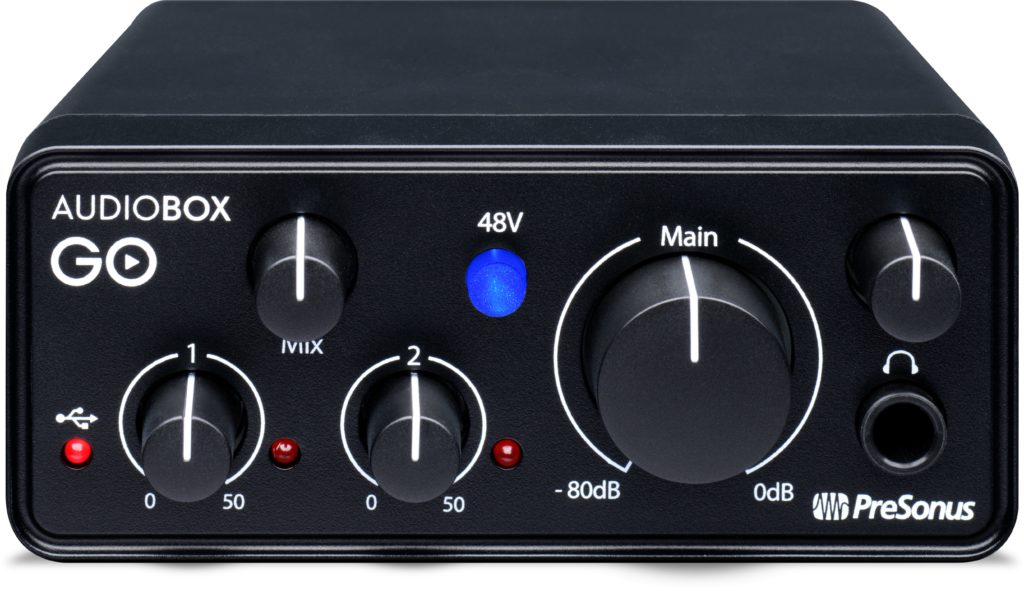
In my time of podcasting I’ve had a wide variety of USB audio interfaces with any number of ins and outs. Some have been really good and others well, not so good but each usually had its pluses and minuses. Presonus has made a number of the ones I’ve used and from stuff I read online, I became interested in their AudioBox Go. This is a bare minimum interface with most of what a single podcaster/ musician might need and not much else. It is bus-powered and will not only work with a Mac or Windows PC, but with the right dongles be a solution for Android, iOS, and iPadOS too. It has an all plastic body which I’m sure was done to keep the price down. The device is very tiny, measuring 1.73-inches in height, 3.3-inches in depth, and 4.25-inches in height. It weighs in at about 1/2 a pound. Normally I wouldn’t bother with this in a review, but frankly this is about as small as an audio interface can be and still have room for the required ports.
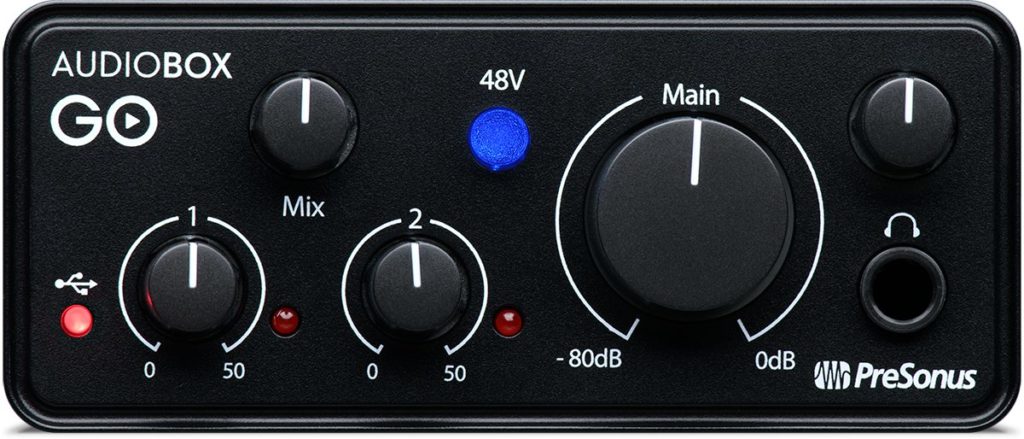
Speaking of which, There’s two inputs on the rear, one TRS combo jack (capable of either a TRS or 1/4-inch input) and one 1/4-inch input. Each input has a dedicated gain knob with the only way to gauge how much gain you have is a clipping LED on the front panel. If you see that, you have too much gain. There’s also a right and left 1/4-inch output. Not much else on the back other than a USB-C port used to connect the device to your computer and as mentioned, since it’s bus-powered, there’s no power brick supplied or needed.
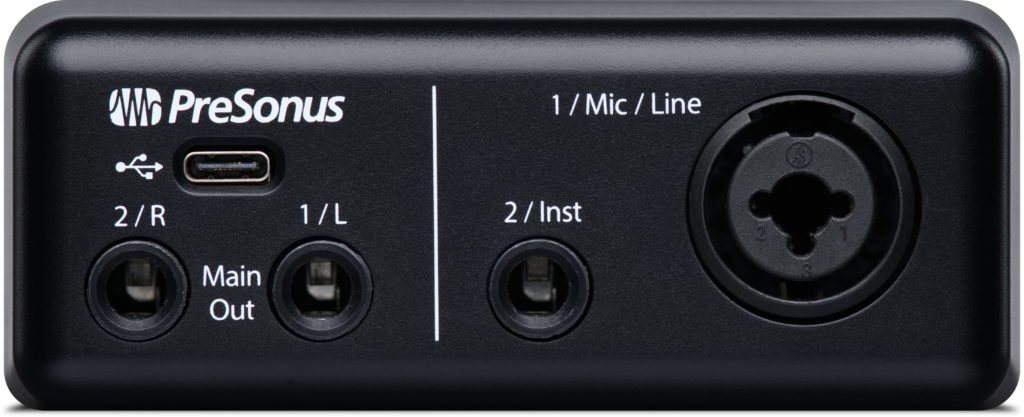
On the front there’s the two gain knobs, one for each input, a mix dial to go between monitoring the inputs and monitoring any sound that is channeled through the computer to the device. There’s a 48Vdc Phantom Power for condenser mics (or other mics that might require it) that goes through the XLR port. There’s a large dial for controlling the volume of the main outputs, a headphone port and a small dial for the volume of it. That’s pretty much all there is. For those who are interested, here’s some of the specifications.
Frequency Response: 20Hz to 20kHz
Preamp range: 50dB (0dB to +50dB)
Line (XLR) Input Range: 50dB (-20dB to +30dB)
Instrument (1/4-inch) Range: 50dB (0dB to 50dB)
Line Outputs Frequency Response: 20Hz to 20kHz
Headphone Output Frequency Response: 20Hz to 20kHz
Along with the interface and a USB-C to USB-A cable, there’s also a lot of free downloadable software that you get with this (and most other PreSonus interfaces) including Studio One Prime DAW recording software and a Studio Magic software bundle which includes a lot of sound samples and virtual instruments. Most if not nearly all of this is geared toward musicians so if you’re buying this to power up a mic for podcasting, streaming, or other single use audio reasons, you won’t find much use for it. Studio One however (even this limited version) is a very nice DAW.
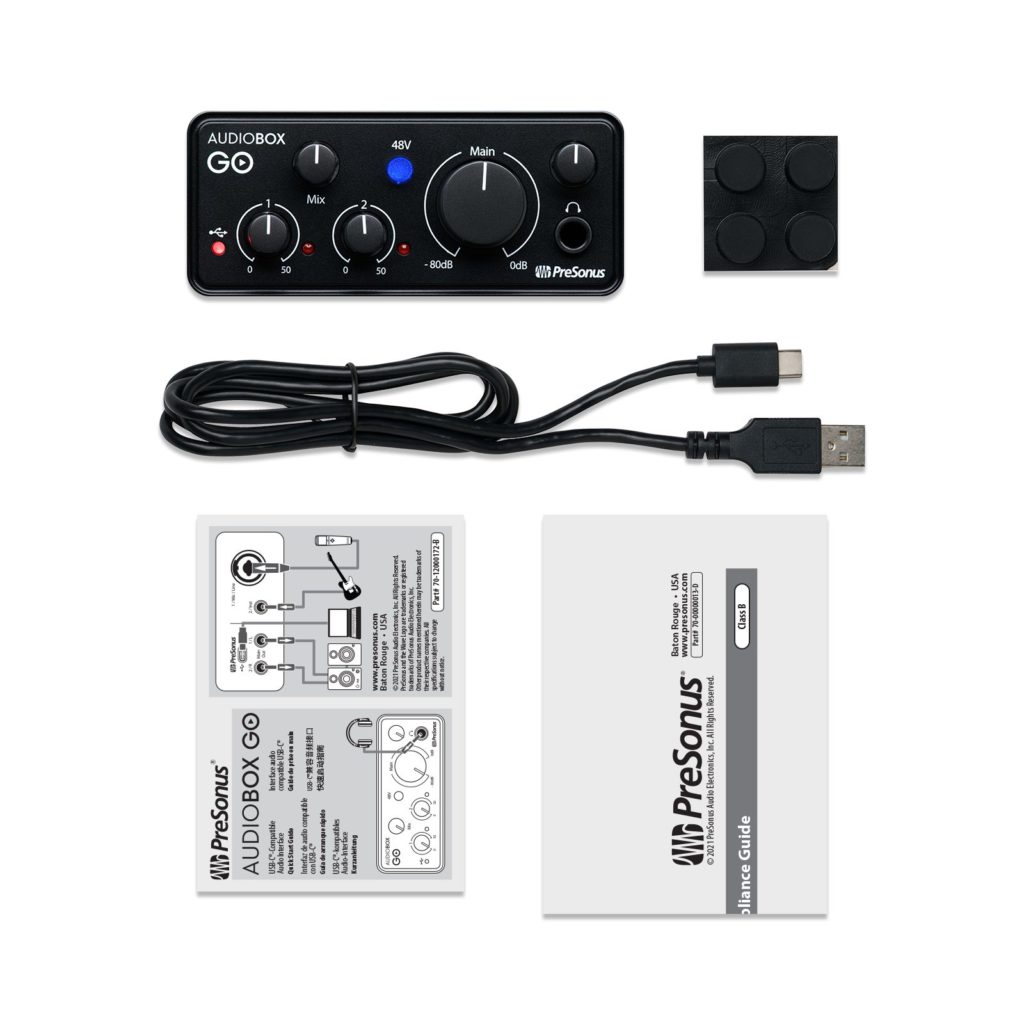
So how does it perform? I connected the AudioBox to several different microphones, both dynamic and condenser and used a Triton Fethead dynamic microphone booster too. The results were a bit of a mixed bag.
Condenser microphones faired pretty well. Naturally with 48V Phantom Power turned on, most of the condensers had a pretty healthy output at the 75 percent gain level (the knob sitting at about 3 o’clock) and with very little noise or background (depending on the mic). The RODE M2 and Behringer SB78A sounded crisp and clear, however the Lewitt 440-Pure once set at a level to drive it had considerable background noise. Which is odd because the Lewitt is one of the quietest condenser mics I’ve got.
The dynamic mics didn’t fair as well and needed more gain to reach the same level. This is where I discovered an oddity in this preamp that almost makes it a no go. As you need to set the gain to it’s near maximum for most dynamic mics, there’s a point where as you turn the gain knob, it suddenly spikes and overdrives the mic making unacceptable audio. Every single dynamic mic did this (Shure SM-58, Behringer BA-85A, Rode Podmic) making it difficult to set a gain level that I could trust and it was more noticeable on the mic it seems everyone wants to use, the Shure SM-7B. You can get around this by using a dynamic mic preamp like the Triton Fethead or Cloudlifter, but be careful if you’re in a noisy environment as it will boost the noise levels too. Plus it adds to the overall cost too.
Would I recommend the PreSonus AudioB ox Go? It kind of depends. On the plus side it’s pretty inexpensive, lightweight, and portable requiring no external power other than through your computer’s USB port. It also provides all the ports and features you might need as a solo podcaster or being on the go. On the downside, 50dB of gain (and only 30dB on the plus side) isn’t really enough for some super gain hungry microphones and will likely require some boosting in post. Then there’s the weird gain spike near the top of the potential gain level that will require careful balancing to not overdrive your mic. If you’re using a condenser mic, this won’t be nearly the concern as compared to dynamic mics.
MyMac ratings
Value 7 out of 10
Features 6 out of 10

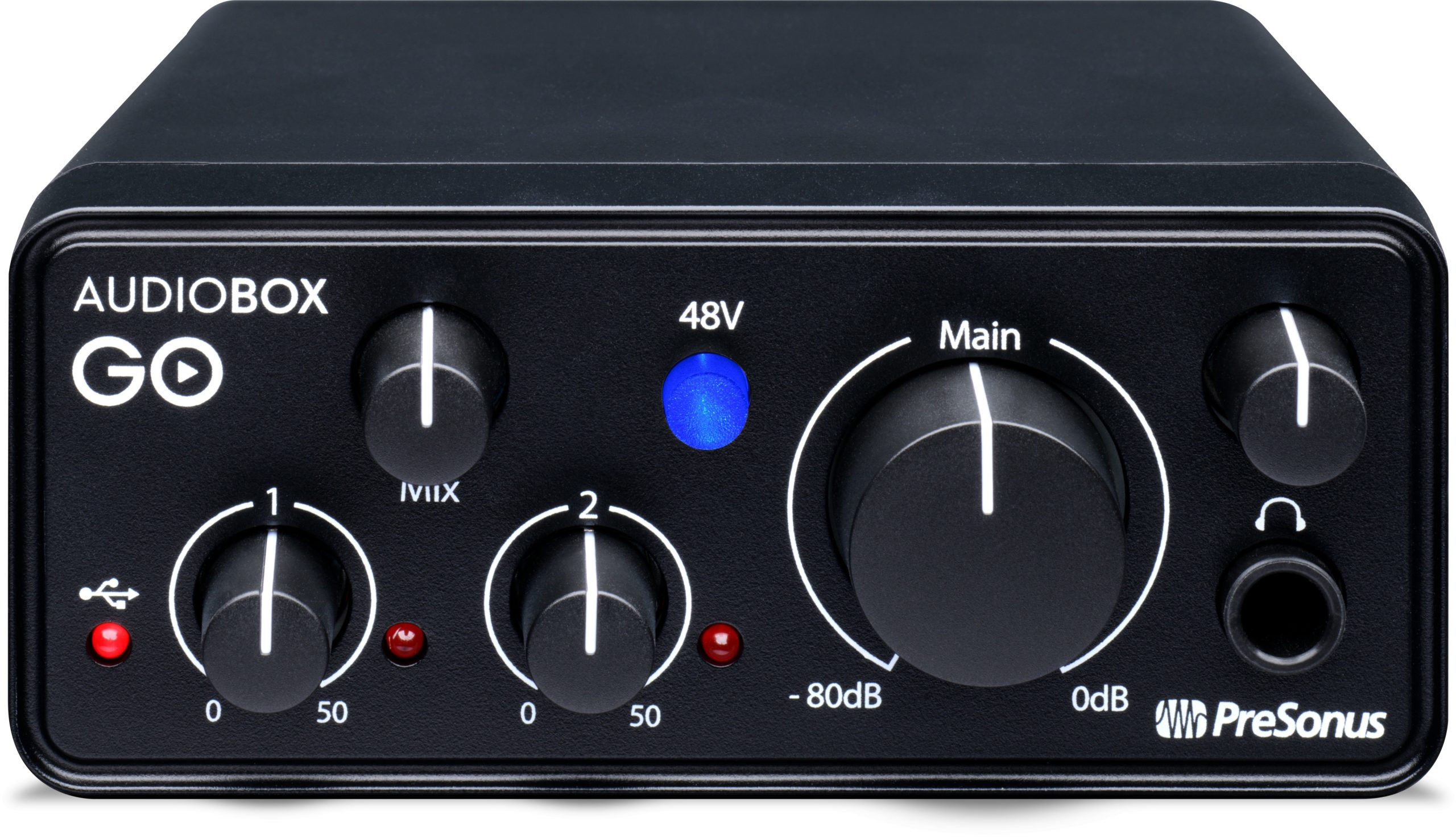
Leave a Reply
You must be logged in to post a comment.